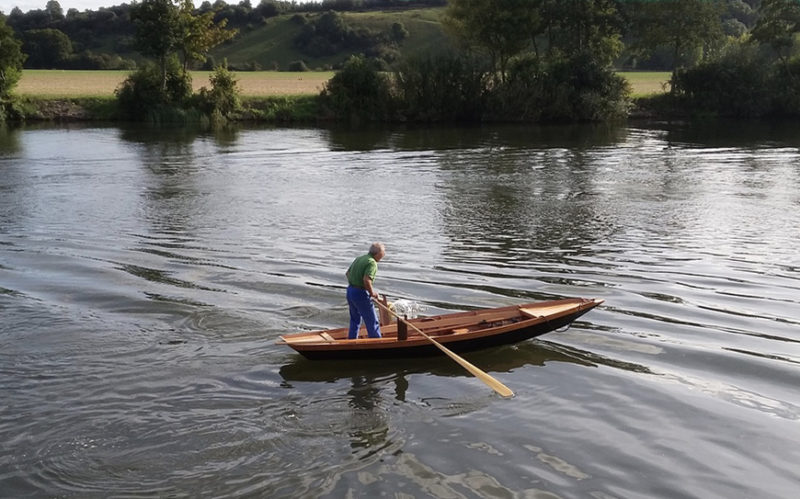 Phil Wragg
Phil WraggFar from the canals and lagoons of Venice, Richard Nissen plies the pastoral waters of the River Thames. His oars are crossed in the alla valesana style.
Richard Nissen lives in a houseboat on the Thames, and naturally he has gathered a collection of small boats for taking advantage of the river that flows past his home. He has an 1890s lapstrake single racing shell that he restored, a double, and a catamaran single—all for sculling—a stitch-and-glue canoe that he and a friend paddled 200 miles down the Thames to its mouth, and GEM, a 1920s electric launch.
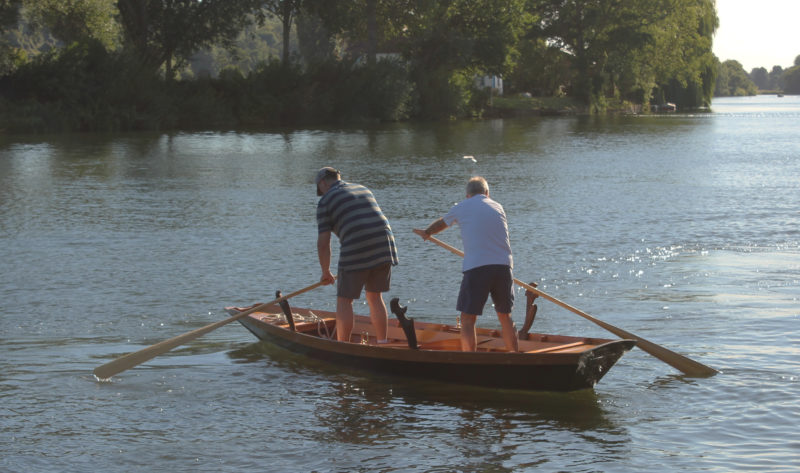 Phil Wragg
Phil WraggWith an additional forcola forward, the s’ciopon can be rowed with a pair of oars. The stern rower, popièr, customarily rows a starboard oar and the bow rower, provier, rows port.
Richard traveled to Venice and while there took a lesson in Venetian rowing. The experience piqued an interest in forward-facing, stand-up rowing. The Venetians have two techniques: alla veneta with a single oar, in the manner of gondoliers, and alla valesana with two oars crossing each other—the port oar is rowed with the right hand and the starboard oar is handled with the left. Both methods take a lot of practice to master and Richard wanted to continue working on his Venetian technique when he returned home, so he decided to build a Venetian boat.
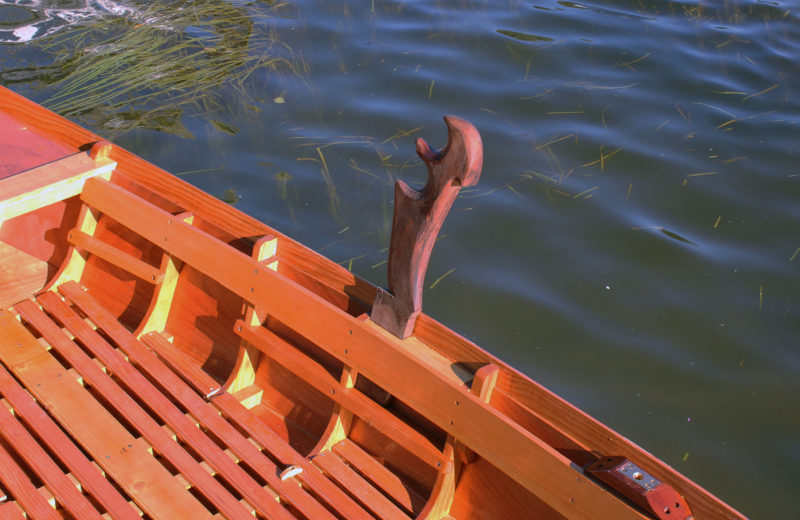 Phil Wragg
Phil WraggAs a workboat, a s’ciopon doesn’t have a forcola as elaborate as those used aboard gondolas.
He chose the smallest and simplest of traditional designs, a s’ciopon. The name is derived from the Italian word for rifle, and reflects the design’s original purpose—hunting waterfowl. The boats are about 15′ to 18′ long and were once meant to carry a massive gun up to 9′ long with a 3″ bore. Richard bought plans for a 5-meter s’ciopon from Gilberto Penzo, one of Venice’s leading authorities on traditional boats and rowing. To get the project to fit into his garage shop, he had to shorten the length from 18′ to 16′.
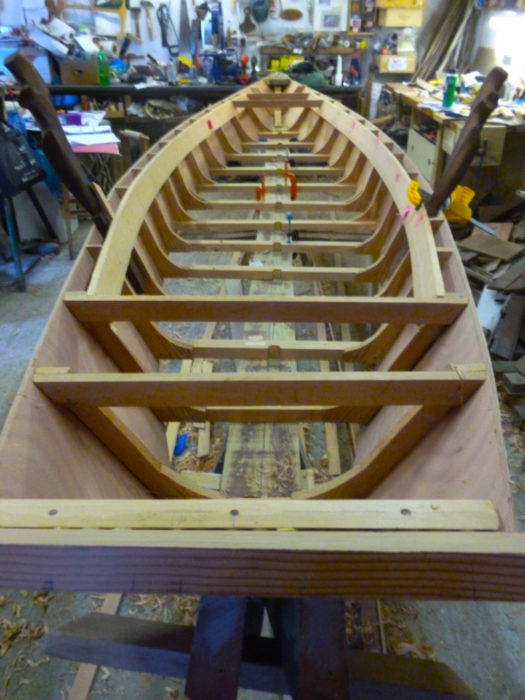 Richard Nissen
Richard NissenNissen’s s’ciopon has traditional framing, making it quite stout, but the plywood sides and bottom reduce the boat’s weight.
The plans provide beautiful drawings, but not much advice on the construction, so the project was ambitious, especially as Richard’s first venture into building a boat from start to finish. The wooden oarlocks, or forocle, are complex pieces with many curves, each meant for a particular stroke, and the oars, remi, have some subtle asymmetries, but Richard took on those challenges. Workboats in Venice can have very crude versions of these two items, but Richard’s efforts were to his credit.
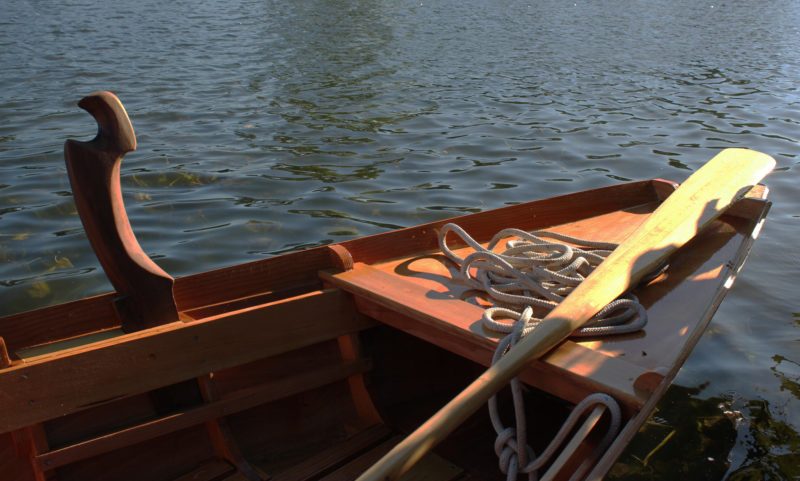 Phil Wragg
Phil WraggA Venetian oar, called a remo, appears to be quite simple, but it is neither straight nor symmetrical in plan or profile.
A traditional s’ciopon would be heavily built, and that weight, settling the hull well into the water, provides stability. Richard used plywood for the bottom and sides, which reduced the weight and, as he discovered, “the lighter the boat, the less secure you feel standing up in it to row.” He got used to the lesser stability, but as a precaution for choppy water, he lowered the center thwart a few inches from its normal position just below the sheer, and added a set of oarlocks so he could row sitting down with conventional oars.
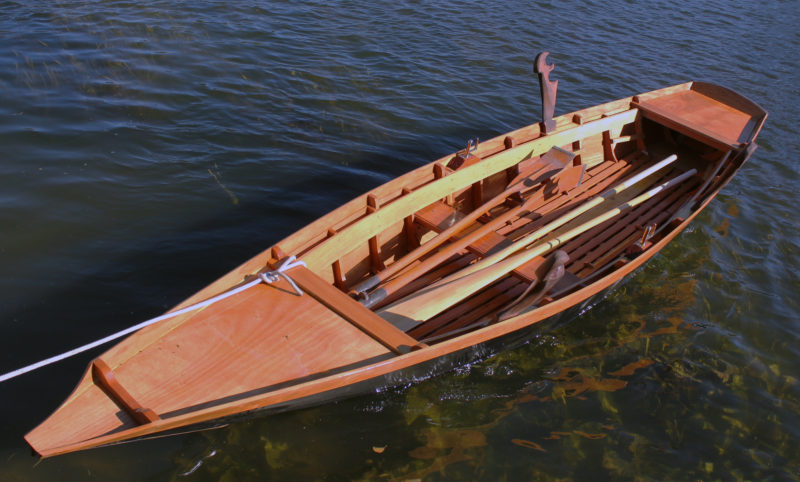 Phil Wragg
Phil WraggWith the lowered thwart amidships and a pair of spoon-bladed oars aboard, this s’ciopon can be rowed with the oarsman seated.
Richard takes his s’ciopon out on the Thames in the evenings when the river is usually undisturbed by large powerboats. He continues to work on rowing alla valesana and says, “with the traditional open forcula you can take the oar out when you want, but keeping the oar in place is terribly hard. Every time I go Venetian rowing I take lots of strokes perfectly, and then suddenly the oar pops out.”
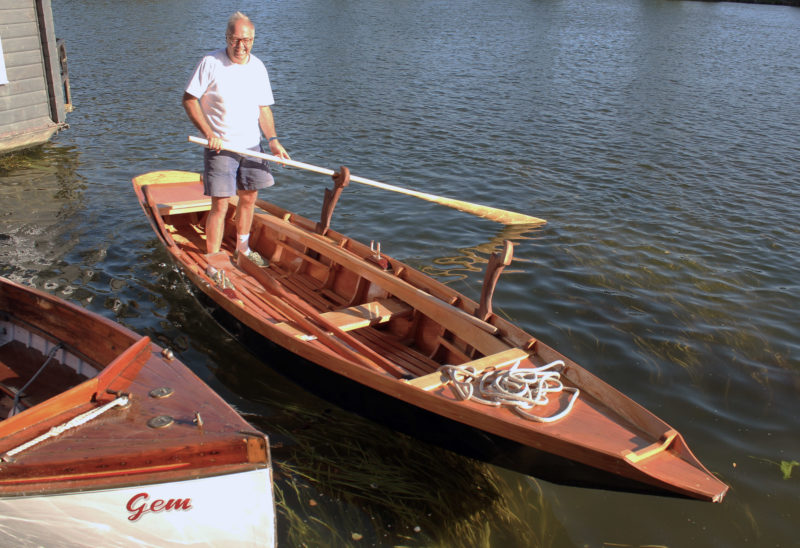 Phil Wragg
Phil WraggThe ‘midship thwart was originally intended to support the butt of the large rifle that a s’ciopon once carried. Richard lowered the thwart in his s’ciopon so it could also be used for conventional rowing.
Once he gets his two-oar technique honed, he’ll take on rowing solo alla veneta where the veering of the bow away from the oar has to be corrected by angling the blade of the oar forward and keeping it submerged on the return stroke. Holding a straight course isn’t easy. The intersections of Venice’s canals require boats that can spin around a tight corner, so their bottoms have lots of rocker and aren’t outfitted with skegs. Boats like the s’ciopon have very little directional stability.
“A Venetian boat is designed for operating in Venice and, culturally, are a million miles from other sorts of boats,” notes Richard. “They are seldom seen in other parts of the world.” At least one is now seen on the Thames.![]()
Have you recently launched a boat? Please email us. We’d like to hear about it and share your story with other Small Boats Monthly readers.
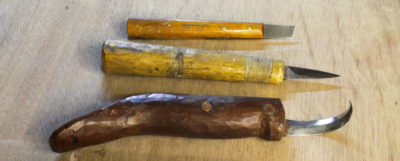

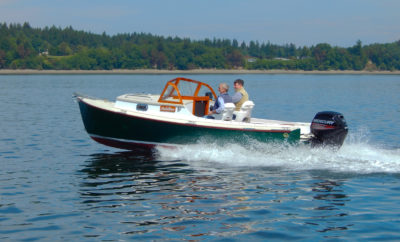
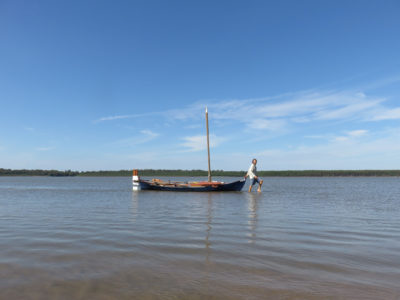
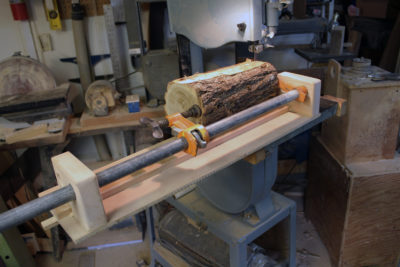
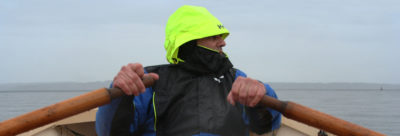
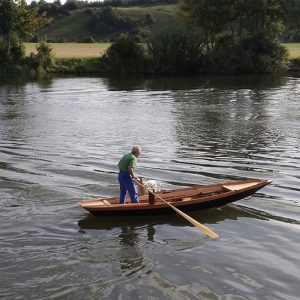

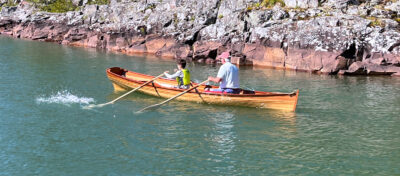

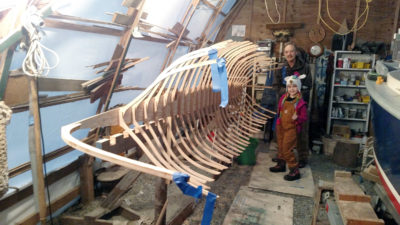
Wow. This is pretty impressive. I’m envisioning one on the Chattahoochee River in Atlanta, amongst the rearward facing rowing teams practicing for their college teams.